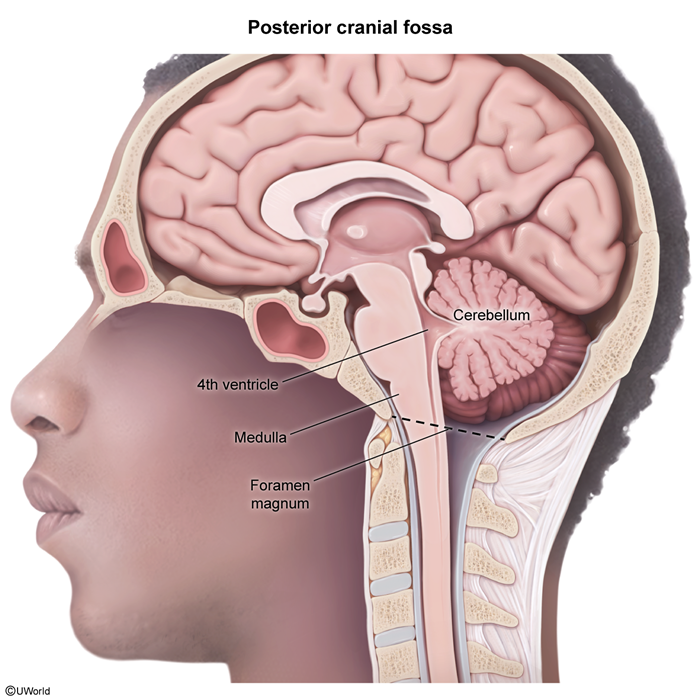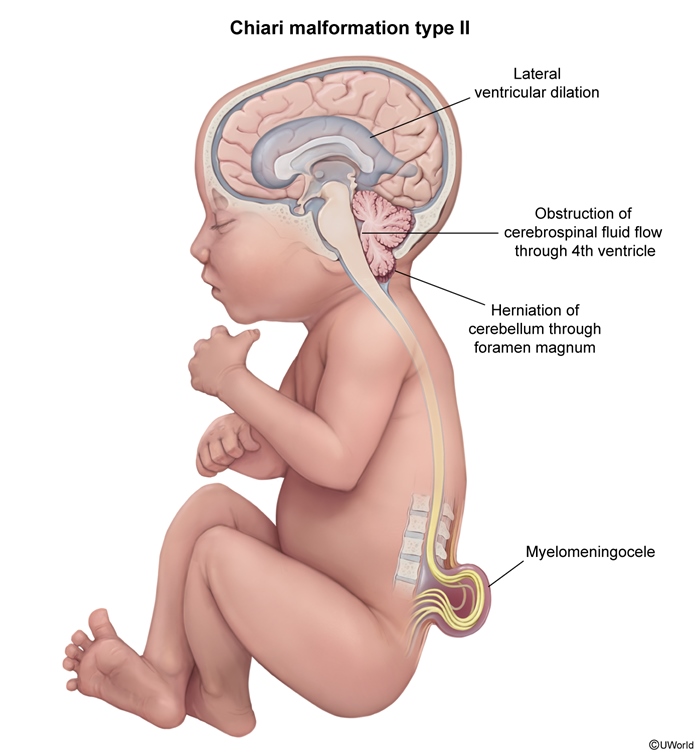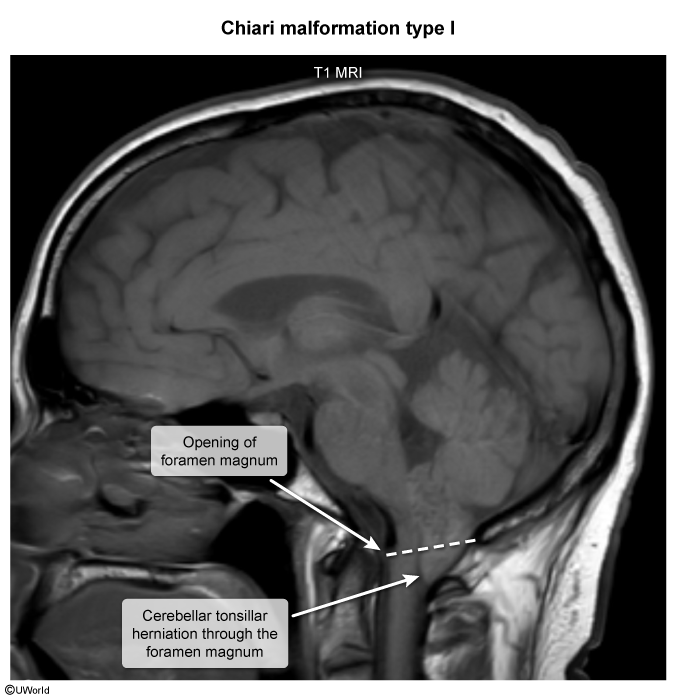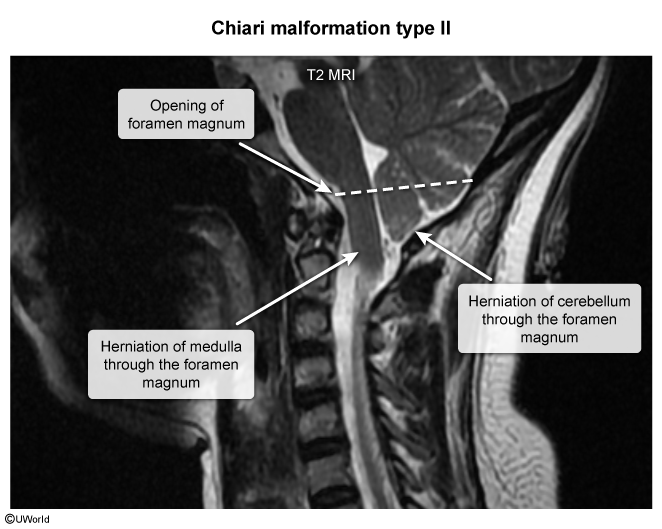Chiari Malformations
Article Sections
Introduction
Chiari malformations (CMs) are structural abnormalities at the craniocervical junction where portions of the cerebellum and/or brainstem herniate through the foramen magnum into the spinal canal. CMs are classified into types I-III based on the degree of herniation and associated anomalies. These malformations can result in various neurologic symptoms, depending on the severity, type, and associated complications.
Anatomy and pathophysiology
The cerebellum normally sits within the posterior cranial fossa and above the foramen magnum, which contains the medulla, nerves, and vasculature (Figure 1); CMs are a group of congenital disorders caused by the underdevelopment of the posterior fossa. The small size of the fossa causes parts of the cerebellum and potentially the medulla to herniate through the foramen magnum, compressing these structures.
Continue Learning with UWorld
Get the full Chiari Malformations article plus rich visuals, real-world cases, and in-depth insights from medical experts, all available through the UWorld Medical Library.
Figures


Images


